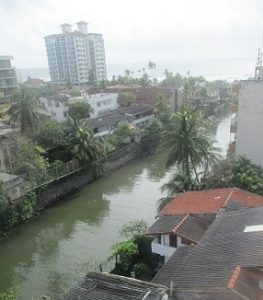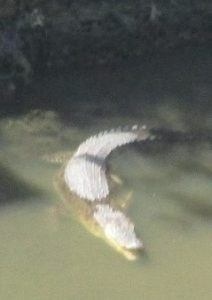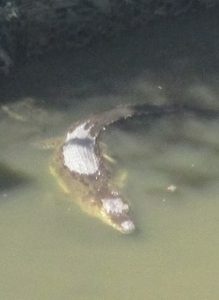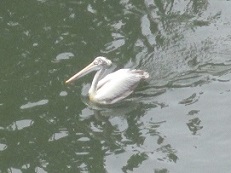
Okay, Christmas doesn’t really look like Christmas in the Sri Lankan capital city of Colombo, which is my home just now.
For me, Christmas conjures up images of snow, snowmen, snowdrifts, snow-covered pine trees, Santa’s reindeer and sleigh hurtling across snowy landscapes, carol-singers chorusing outside doorways in falling snow, Macaulay Culkin inflicting grievous bodily harm on woollen-hatted, greatcoated intruders trying to break into his house from the snowy wastes outside. In Colombo today, December 25th, Christmas Day, it’s 29 degrees centigrade with a 56% humidity level and I have just observed a pod of pelicans floating on the canal-water below my living-room balcony.
Mind you, there seemed something vaguely Christmassy about the sight of those pelicans. Maybe the three wisest ones were making their way to the Baby Jesus to present him with gifts – fish, fish and fish.
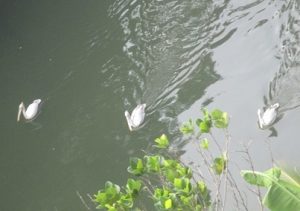
Still, if there’s one thing I’ve learned from my travels, it’s that everyone loves Christmas. Not only people in wintry Christian countries, but also folk in tropical, Mediterranean and sub-Saharan climes and in societies that are Buddhist, Muslim or downright atheistic.
In Addis Ababa in Ethiopia, Santa Claus was lurking outside the store-entrances in the run-up to December 25th, even though in that mainly Orthodox-Christian country people weren’t supposed to be celebrating the birth of Christ until two weeks later. In Japan, the Christmas trees, decorations, presents, carols and so on provided a pretty backdrop to the end-of-year bonenkai parties. In Tunisia, I saw Tunisians gamely sporting Santa hats while they did business in the alleyways of Tunis’s Medina. Even in North Korea, where the only religion you were allowed to practice was one worshipping the abilities, achievements and overall brilliance of the Kim dynasty, my local supermarket insisted on having a rather scruffy-looking Christmas tree out in its foyer – not just over the festive season, but for the full twelve months of the year.
So, it’s no surprise that Sri Lankans are Christmas-philes too, even if their country is predominantly Buddhist. Here is a selection of images from Christmas 2021 in Colombo.
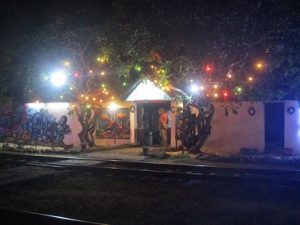
Firstly, I find these nocturnal Christmas lights charming. Arranged across the trees flanking the entrance to the Beach Wadiya Restaurant, just south of the Kirillapone Canal that separates the Colombo 4 and Colombo 6 districts (and on which I saw the pelicans today), they conjure up a festive atmosphere without being overly fancy or fussy. Don’t, however, wait outside the restaurant and admire its Christmas lights for too long, because to get to its entrance you have to clamber over the coastal railway tracks heading south from central Colombo. Stand entranced by those lights and you run a risk of being flattened by the evening Colombo-Galle express.
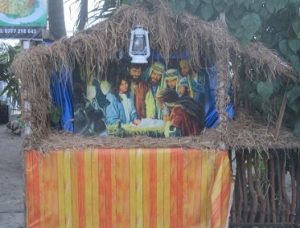
The Wadiya’s Christmas display is more effective than the one outside another restaurant you have to cross the railway line to reach, the Randiya Beach Restaurant north of the canal. Presumably to avoid the cost of buying figures to populate a Nativity scene, they’ve set up a Nativity where the characters simply appear in a picture on the backdrop. The cheapskates!
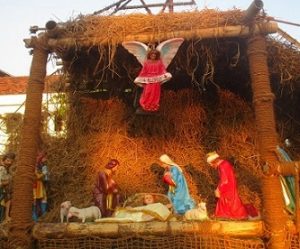
In contrast, no expense has been spared on the Nativity scene that’s been erected near the gates of St Peter’s College on Galle Road in Colombo 4. It’s got the complete set of Nativity action figures. However, when you look closely at it, you realise – Jesus, Mary and Joseph and the wee donkey! – how big the Holy Infant is. He’s enormous! Poor Mary must feel she’s given birth to a mutant.
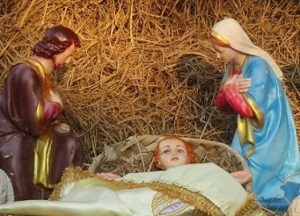
Even the Westeern Hotel on Marine Drive, which houses my local pub, has got into the Christmas spirit and decked out its reception area not just with a Christmas tree but with trails of blue lights that form Christmas tree-type patterns along its front windows. The bright blue glare emitted is, I have to say, a bit headache-inducing. Thankfully, no blue light penetrates the bar at the back of the hotel-building where I frequently drink. In fact, no light of any sort penetrates it ever. And that’s the way I like it, baby (as Lemmy would say).
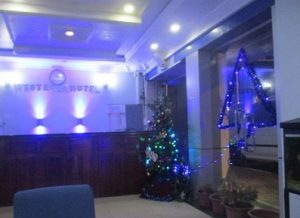
Meanwhile, Colombo’s – or at least my part of Colombo’s – rubbish collectors have evidently been told to show some Christmas spirit. During the past couple of days, they’ve been prowling along the streets, enduring the sweltering heat and throwing the city’s festering garbage into the back of their trucks whilst wearing Santa Claus hats. I tried taking a photograph of a group of these guys in their Santa hats, loading their truck with rubbish, while I sped past them in a tuk-tuk yesterday. Unfortunately, I got my timing wrong and ended up with a picture of the side of the truck and nothing else. So, you’ll just have to take my word for it.
Finally, although it’s on a humbler scale than most of the Christmas trees I’ve seen around Colombo, I like this skinny and slightly lopsided tree that the guard recently erected in the entrance area of my apartment building. And I’d rather see a Santa hat at the top of an insentient Christmas tree than on the head of some poor, sweating guy who has to toil all day gathering up the city’s reeking garbage.
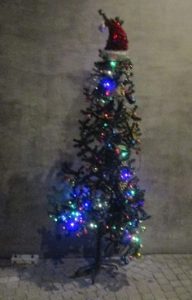
Merry Christmas, everybody!

